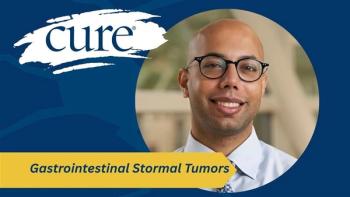
How Younger Patients With Colorectal Cancer Symptoms Can Be Better Self Advocates
Young-onset colorectal cancer is sometimes hard for patients to talk about due to stigma, but one oncologist discusses how patients can be better self-advocates.
Many younger patients with signs or symptoms of colorectal cancer (CRC) describe being “brushed off” by their doctors on the first visit, leading to many early-onset cases that have reached an advanced stage by the time they are diagnosed; this, in turn, makes the cancers more difficult to treat. That’s why it’s important that individuals feel empowered to talk with their doctors about any health concerns they may have, even if they are younger or appear healthy, says Dr. Mark Lewis of Intermountain Healthcare.
In an interview with CURE® in which he discussed actor Chadwick Boseman’s death from the disease, Lewis went on to explain the consequences that younger patients may face as a result of a lack of shared decision making with doctors. Lewis concluded with advice on how patients can work with their health care teams to be better advocates for themselves and get testing when it's needed.
Transcription:
Yes, they do tend to present at a later stage, meaning the cancer is more advanced at the time of diagnosis. So even though, on the whole, they're younger, and aside from the cancer healthier than some of their older counterparts, that unfortunately sort of levels the playing field for them. And they seem to actually sometimes do worse than you'd expect, just based on their chronologic age. So, the fact that your question is two parts is perfect, because I think it requires basically a two-pronged approach.
We're clinicians, including my colleagues in primary care, and my wife is a primary care pediatrician, and they have an enormous challenge to sort of discern who's really sick from the well, among their patients undergoing health maintenance. So, those physicians have to be aware, this is a growing problem, and sort of have their antennae up for that.
But then I also think there's nothing more powerful than a patient who advocates for themselves, and that can be particularly difficult for a young person. Hopefully, we're not too intimidating as doctors, but I still think there's this notion that somehow we are paternalistic and we're going to tell you what to do. Increasingly, that paradigm is going away, and we're a lot more about making decisions together. It's even called shared decision making.
So, I think it's really important, especially if you only have a short period of time with your doctor for an annual checkup, that you really bring to the forefront things that are concerning you and that are hard to talk about.
You know, in my experience, young people, particularly young men, don't really want to talk about rectal bleeding. But it's important that you bring things up like, obviously blood lost in the stool, but even unexplained abdominal pain, changes in your weight, changes in stool caliber; these are all, unfortunately, signs that often are either suppressed by the patient or overlooked by the doctor or both. And you're absolutely right that the tendency to think that a young person must be healthy based on your age, unfortunately, that notion has been severely challenged by tragic examples like Chadwick Boseman’s, and it really calls for more attentive diagnosis.
Lastly, in answering your question, I want to draw a distinction between screening and diagnostic procedures. Screening is almost governed exclusively by age and a little bit by family history. Diagnosis, however, is when you go to your physician and say, ‘I have XYZ complaints,’ and then they launch an investigation as to why that's happened to you. Those are completely distinct. So, coverage for screening is quite different, actually, than coverage for diagnosis. So, it's really important that patients advocate for themselves and that a doctor secures the appropriate coverage.





